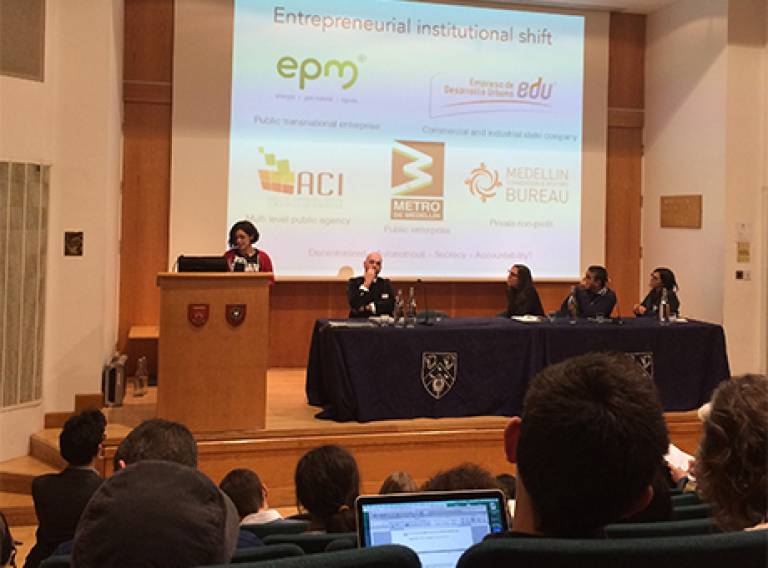Medellin in motion: Governmental technologies of city-model making
4 March 2016

‘Urban Governance and its Discontents’ was the hot topic at the latest Oxford City Debates event hosted by the Oxford Programme for the Future of Cities Througha series of rigorous yet accessible public dialogues, participants grappled with the intellectual and everyday implications of their theories and practices on cities to produce visionary but grounded research and intervention strategies for the future of city life.
The afternoon session focused on the topic ‘Governing the City: Where Do Infrastructure, Democracy, and Social Justice Meet?’, with DPU’s Catalina Ortiz delivering a talk titled ‘Medellin in motion: Governmental technologies of city-model making’. The talk discussed how the circulatory power of urban policies and planning ideas is shaping the ways in which the politics of space production takes place in contemporary urbanism. Emerging urban models place the ‘global south’ at the center of urban innovations, challenging the traditional sources of innovation and transgressing the mainstream directionality of travel North-South. The debate on policy mobility – mutation and the acceleration of the international exchange of planning practices gained increasing attention to be considered pivotal for unveiling a variegated neoliberal modus operandi.
However, the particular institutional, spatial and symbolic arrangements that enable the movement of ideas are often overlooked. Following the ideas of critical policy mobility scholars, using governmentality approaches to urbanism, talk explored the context-sensitivity of the recalibration of urban imaginations that city models engender. Particularly, through her research, Catalina sought to reflect on the practices of city model making and its embedded governmental technologies of circulation offering empirical evidence from the case of Medellin, Colombia. Medellin, as a recently praised urban renaissance model, provides a site to explore the guiding question of the research: how an urban model gets enacted and circulated? Catalina argued that governmental technologies of city model-making rely on an ensemble of circulatory discursive coalitions, acupuncture of iconic-urban/architectural design, inter-sector alliances and transnational platforms of exchange for internal and external political legitimating purposes.
The afternoon session video can be viewed below. Catalina's talk begins at 26:59 minutes.
 Close
Close

